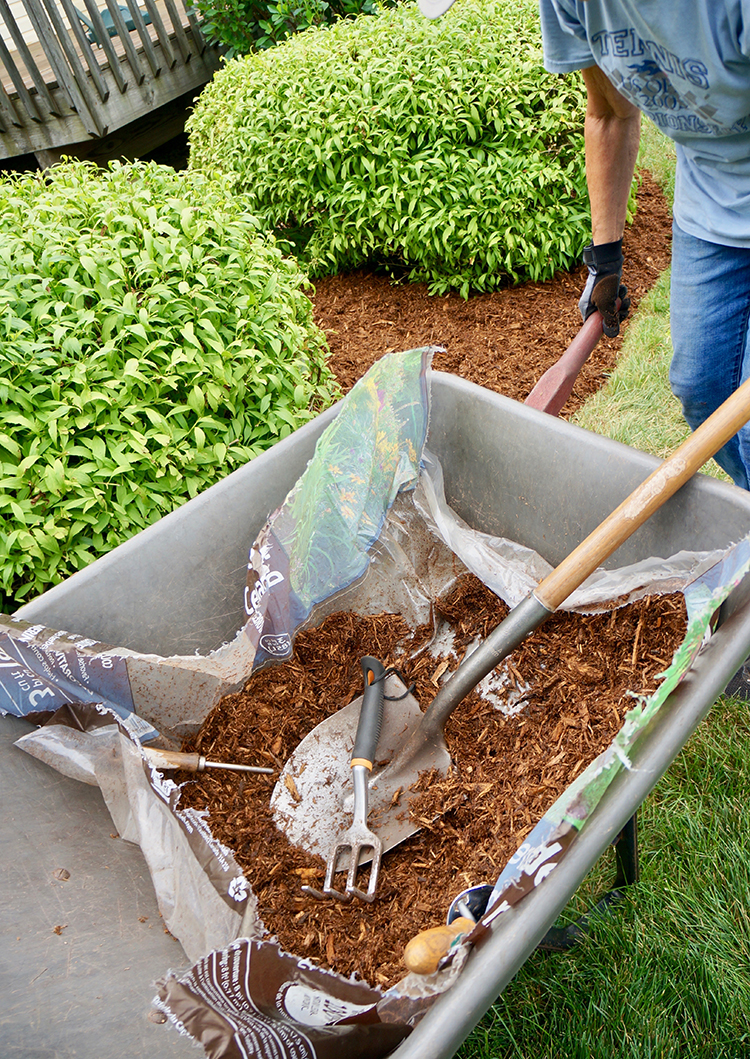
As gardeners eagerly anticipate the arrival of spring, incorporating mulch into garden care routines can significantly enhance plant health, soil quality, and garden aesthetics.
A well-applied mulch layer can significantly reduce the emergence of weeds. By blocking sunlight from reaching the soil surface, mulch prevents weed seeds from germinating, thus reducing the competition for nutrients and water.
Mulching in spring offers numerous benefits, making it a critical step for anyone looking to cultivate a thriving garden. Here’s why mulching should be at the top of your gardening to-do list this season.
One of the primary benefits of mulching is the ability to retain soil moisture. A layer of mulch reduces water evaporation from the soil surface, ensuring that plants remain hydrated even during dry spells.
This not only conserves water but also keeps plants healthy and reduces the need for frequent watering. Also, mulch acts as an insulating layer for the soil, protecting it from the temperature extremes that can be typical of spring weather.
It keeps the soil warmer on cool nights and cooler on hot days, creating a more stable environment for plant roots.

This not only saves time and effort in garden maintenance but also promotes healthier growth among desired plants. Organic mulches, such as wood chips, straw, or compost, break down over time, adding valuable organic matter to the soil.
This enhances soil structure, increases nutrient availability, and encourages beneficial microbial activity. Improved soil health translates to more robust plant growth and reduced susceptibility to diseases.
Beyond its practical benefits, mulch can significantly improve the visual appeal of a garden. A uniform mulch layer creates a neat, cohesive look, accentuating the beauty of your plants and contributing to the overall aesthetic of your outdoor space.
With a variety of colors and textures available, mulch can be chosen to complement the garden design and color scheme. Mulch helps to prevent soil erosion by absorbing the impact of raindrops and reducing surface runoff.
This is particularly beneficial on slopes or in areas prone to heavy rains, helping to preserve soil integrity and prevent nutrient loss.
Incorporating mulching into your spring garden care routine offers a myriad of benefits that promote a healthier, more vibrant garden. As we welcome the renewing energy of spring, let’s not overlook the power of mulch to transform our gardens into thriving ecosystems.
Discover Beautiful Flowers, Expert Gardening Tips & Interesting Plant Science!
Sign up for the newsletter.
By submitting this form, you are consenting to receive marketing emails from: . You can revoke your consent to receive emails at any time by using the SafeUnsubscribe® link, found at the bottom of every email. Emails are serviced by Constant Contact

About The Author
John Bagnasco has been in the gardening industry for over 50 years, starting with a horticulture degree from Michigan State University and following a stint at Frank’s Nursery and Crafts in Detroit.
After publishing his first book “Plants for the Home Vol. I” in 1976, he moved to California to become regional manager and buyer for the Nurseryland division of Sunbelt Nursery Group.
He then became the head buyer for Armstrong Garden Centers based in Glendora, California. John had a part-time affiliation with Creative Promotions for ten years before joining them full-time in October 2000 as a senior editor and radio personality for Garden Compass.
John has also taught horticulture classes at Palomar College and San Diego State University.
He is the host of the DVD “The Essential Guide to Roses,” which also features Bryan Main and Bruce and Sharon Asakawa.
His most recent book is “Planting Designs for Cacti and Succulents”.
Currently, John is a co-host on “Garden America,” an interactive live gardening show that additionally provides podcasts of the broadcasts accessible on all major platforms.
You can contact John here.
